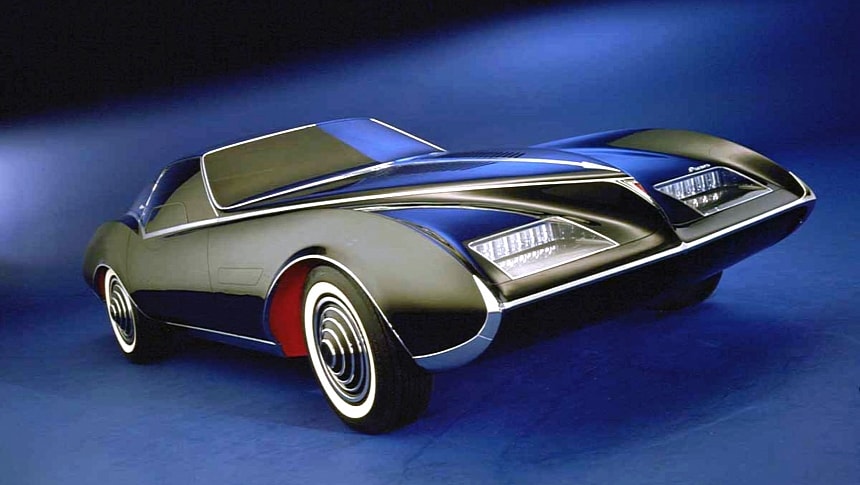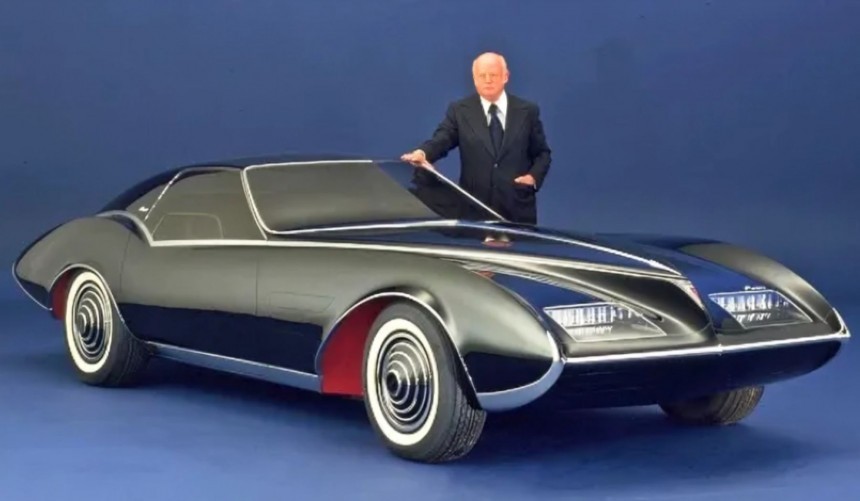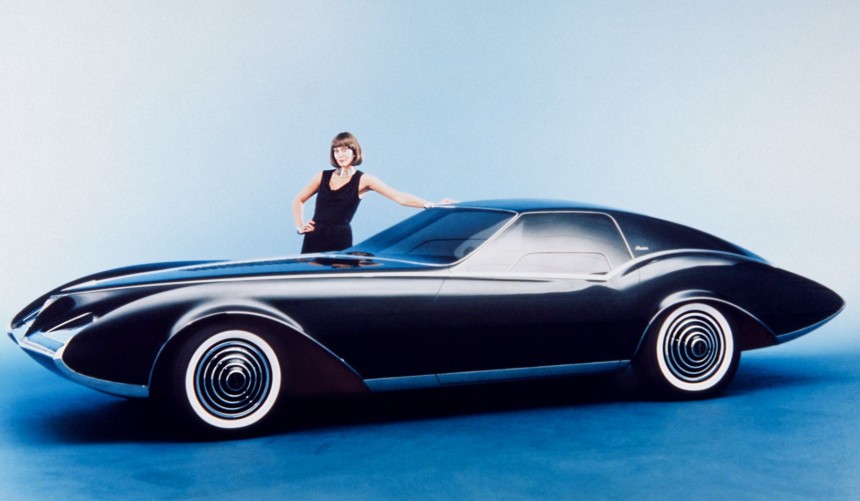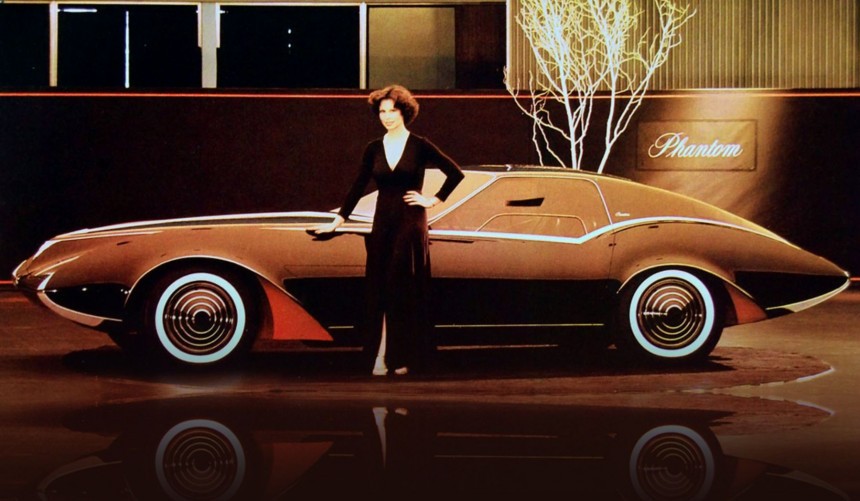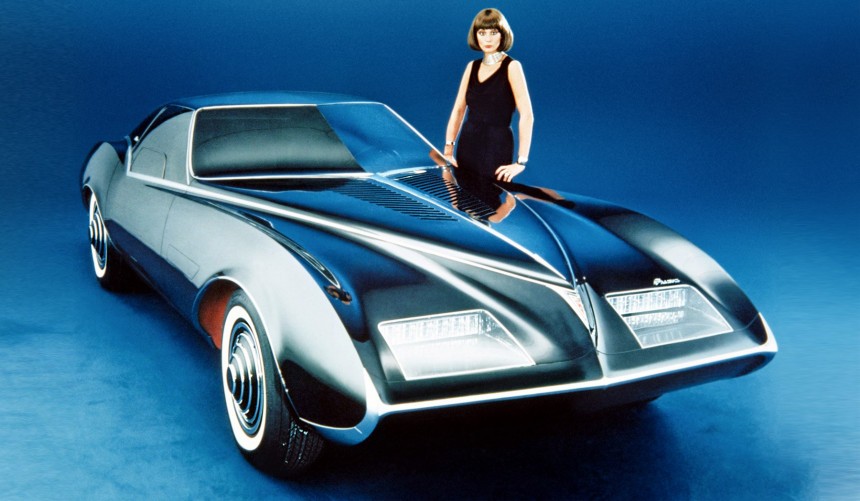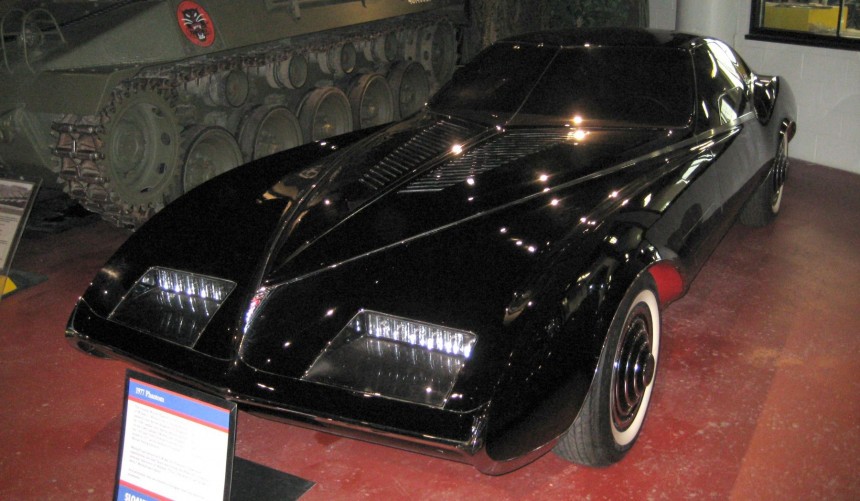Shortly before retiring, legendary GM stylist Bill Mitchell created a stunning concept car that completely disregarded the corporation and industry trends.
During the second part of the 1970s, the American automotive industry switched from elegant and flamboyant designs to boxy and mundane-looking bodies that sacrificed beauty for practicality.
Fuel crisis, stringent emission and safety regulations, as well as a rise of imports led to smaller, more efficient, but also less powerful and glamorous cars.
Stylists were more or less forced to abide by the new trends to remain relevant. However, the great Bill Mitchell, who left his mark on the golden age of American automotive design, was nearing retirement, so he decided to ignore the new trends and create one final concept car with timeless appeal.
Born on July 2, 1912, in Cleveland, Ohio, William Leroy Mitchell, the son of a Buick dealer, developed a talent for sketching cars at an early age.
His family moved a couple of times when he was a child, so he grew up in Greenville, Pennsylvania, and New York. He attended the Carnegie Institute of Technology in Pittsburgh, Pennsylvania, and later took courses at the Art Students' League in New York.
After finishing his studies, Mitchell got a job at the Barron Collier Advertising company, where he worked on layouts and advertising illustrations, including advertisements for British carmaker MG's US dealership network.
Mitchell's works eventually caught the attention of famed GM design head Harley J. Earl, who invited him to join the corporation's new Art and Color Section in 1935.
Under Earl's mentorship, Mitchell quickly rose through the ranks and less than a year after joining the Art and Color Section, he was appointed Chief Designer of Cadillac's new design studio.
At the forefront of the division's most impressive designs, Mitchell became one of GM's rising stars and in 1954 he became the corporation's Director of Styling under his mentor.
Four years later, he replaced the retiring Harley J. Earl as GM's Vice President of Styling, leading the corporation into a new era of design.
During his reign, Mitchell, who earned the nickname "Mr. Glamour," directly designed or oversaw the creation of several iconic cars that defined the golden age of American automotive design.
By the mid-1970s, the American industry was moving towards a new era of styling, with the glamorous shapes of old giving way to boxy and creatively sterile designs.
As you can imagine, Mitchell was not a fan of the new trends, and in 1977, months before his 65th birthday, he decided to retire.
However, before leaving GM, Mitchell took it upon himself to create one more glamorous concept.
Without consulting with GM higher-ups, Mitchell took the locks of the doors of his famous Studio X, recruited promising young designer Bill Davis, and went to work.
Working under the project name Madame X, Mitchell initially sketched the car, and Davis was responsible for turning it into a full-size mockup.
In just a couple of months, the mockup, based on a fourth-gen Pontiac Grand Prix chassis, was done. However, the legendary stylist was not exactly pleased with how the initial notchback roofline looked, so he had Davis modify it into a longer sweeping fastback silhouette.
After the roofline and other subtle details were redesigned, the car took its final form.
A fascinating combination of ample, curved shapes and aggressively sweeping lines, the concept car was a low-slung two-door coupe that seemed to comprise styling cues from Mitchell's most famous creations.
It looked nothing like the full-size coupes of the late 1970s and featured the kind of bold, elegant styling that the US market was missing at the time.
The car was dubbed Pontiac Phantom, as the division supported Mitchell's personal project, but several months later, Pontiac withdrew its support, which is why, in some cases, the concept is called GM Phantom.
Excited with the result, Mitchell organized a photoshoot, then planned to showcase the Phantom to GM's top brass at the Milford Proving Ground.
However, legend has it that, shortly after the car arrived at the location, GM executive Howard H. Kehrl, who wasn't a fan of Mitchell's and now held more authority inside GM than the retiring styling guru, ordered his staff to remove the car from the Proving Ground.
The car still donned a fiberglass shell at that stage and didn't feature a finished interior or a powertrain. Mitchell hoped to get approval to build a steel or aluminum body, adapt a Pontiac powertrain, and design a bespoke interior, but the Proving Ground incident angered him so much that he abandoned the project.
Even though Bill Mitchell never got to finish his final creation and showcase it at a major auto show, the Phantom was saved from the crusher by Bill Davis and several other GM employees.
Davis initially planned to finish Mitchell's work and make the Phantom fully functional, but since the now-retired styling chief wanted nothing to do with the project, he left the non-functional car intact.
Today, Bill Mitchell's last masterpiece is in the custody of the Sloan Museum in Flint, Michigan, and, although not currently on display, it's set to amaze visitors once again next year (2025).
Fuel crisis, stringent emission and safety regulations, as well as a rise of imports led to smaller, more efficient, but also less powerful and glamorous cars.
Stylists were more or less forced to abide by the new trends to remain relevant. However, the great Bill Mitchell, who left his mark on the golden age of American automotive design, was nearing retirement, so he decided to ignore the new trends and create one final concept car with timeless appeal.
Mister Glamour
His family moved a couple of times when he was a child, so he grew up in Greenville, Pennsylvania, and New York. He attended the Carnegie Institute of Technology in Pittsburgh, Pennsylvania, and later took courses at the Art Students' League in New York.
After finishing his studies, Mitchell got a job at the Barron Collier Advertising company, where he worked on layouts and advertising illustrations, including advertisements for British carmaker MG's US dealership network.
Mitchell's works eventually caught the attention of famed GM design head Harley J. Earl, who invited him to join the corporation's new Art and Color Section in 1935.
Under Earl's mentorship, Mitchell quickly rose through the ranks and less than a year after joining the Art and Color Section, he was appointed Chief Designer of Cadillac's new design studio.
At the forefront of the division's most impressive designs, Mitchell became one of GM's rising stars and in 1954 he became the corporation's Director of Styling under his mentor.
Four years later, he replaced the retiring Harley J. Earl as GM's Vice President of Styling, leading the corporation into a new era of design.
During his reign, Mitchell, who earned the nickname "Mr. Glamour," directly designed or oversaw the creation of several iconic cars that defined the golden age of American automotive design.
A stunning retirement gift to himself
As you can imagine, Mitchell was not a fan of the new trends, and in 1977, months before his 65th birthday, he decided to retire.
However, before leaving GM, Mitchell took it upon himself to create one more glamorous concept.
Without consulting with GM higher-ups, Mitchell took the locks of the doors of his famous Studio X, recruited promising young designer Bill Davis, and went to work.
From Madame X to Pontiac Phantom
In just a couple of months, the mockup, based on a fourth-gen Pontiac Grand Prix chassis, was done. However, the legendary stylist was not exactly pleased with how the initial notchback roofline looked, so he had Davis modify it into a longer sweeping fastback silhouette.
After the roofline and other subtle details were redesigned, the car took its final form.
A fascinating combination of ample, curved shapes and aggressively sweeping lines, the concept car was a low-slung two-door coupe that seemed to comprise styling cues from Mitchell's most famous creations.
It looked nothing like the full-size coupes of the late 1970s and featured the kind of bold, elegant styling that the US market was missing at the time.
The car was dubbed Pontiac Phantom, as the division supported Mitchell's personal project, but several months later, Pontiac withdrew its support, which is why, in some cases, the concept is called GM Phantom.
Never completely finished
However, legend has it that, shortly after the car arrived at the location, GM executive Howard H. Kehrl, who wasn't a fan of Mitchell's and now held more authority inside GM than the retiring styling guru, ordered his staff to remove the car from the Proving Ground.
The car still donned a fiberglass shell at that stage and didn't feature a finished interior or a powertrain. Mitchell hoped to get approval to build a steel or aluminum body, adapt a Pontiac powertrain, and design a bespoke interior, but the Proving Ground incident angered him so much that he abandoned the project.
It's still around today
Davis initially planned to finish Mitchell's work and make the Phantom fully functional, but since the now-retired styling chief wanted nothing to do with the project, he left the non-functional car intact.
Today, Bill Mitchell's last masterpiece is in the custody of the Sloan Museum in Flint, Michigan, and, although not currently on display, it's set to amaze visitors once again next year (2025).
